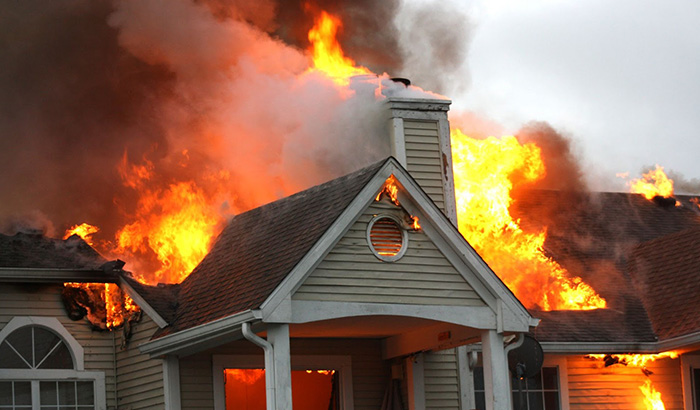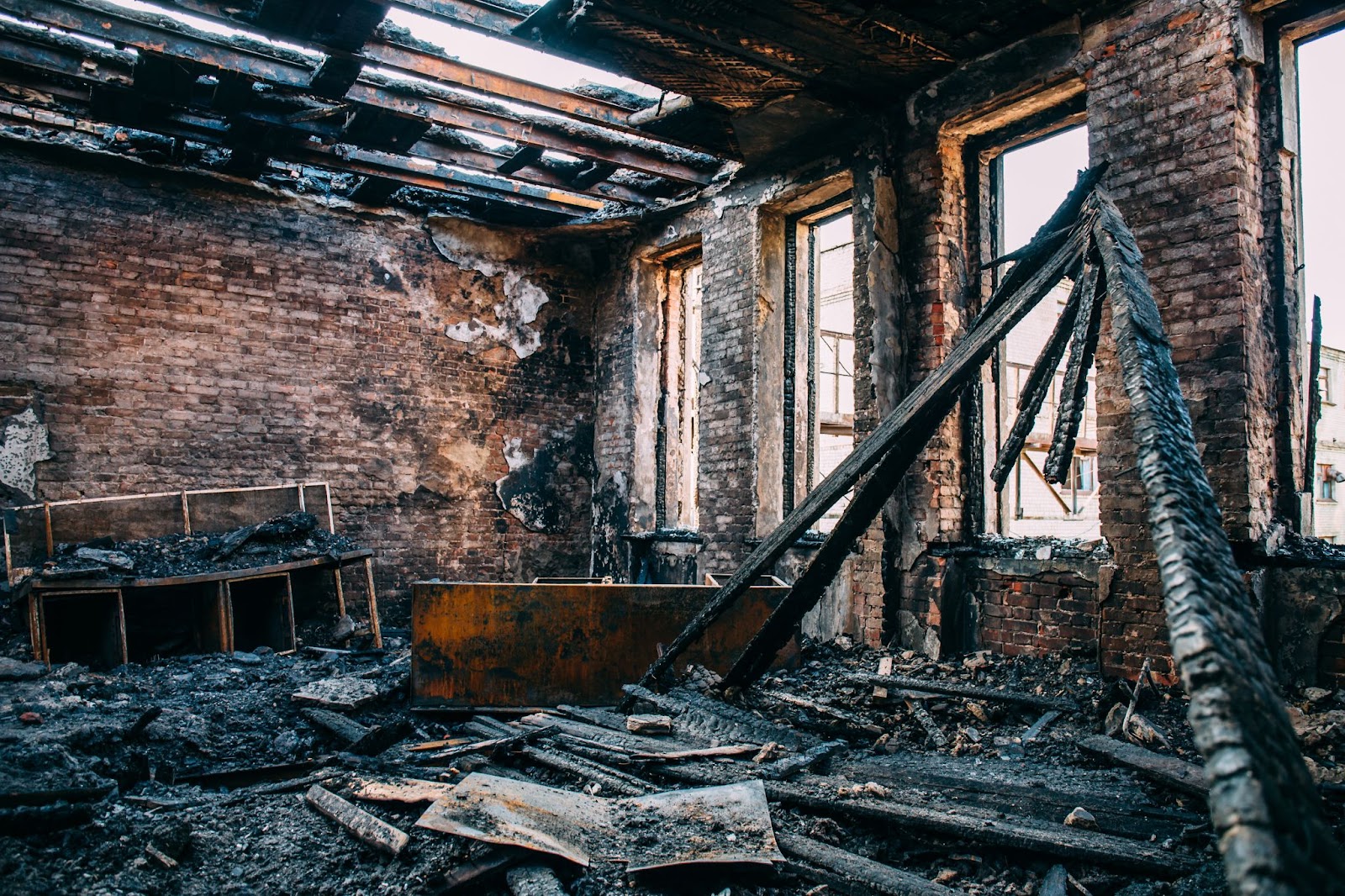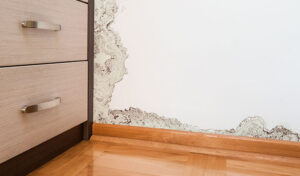Going through a house fire is undoubtedly one of life’s most challenging experiences. Even after the flames are extinguished, the journey of recovery is fraught with stress and emotion.
In the aftermath of a fire, salvaging personal belongings becomes a priority. Unfortunately, not everything can be rescued. The extent of damage caused by a house fire is multifaceted.
Direct exposure to flames is only the beginning; secondary damage from smoke and toxic fumes released during combustion also poses significant risks to items that may have survived the initial blaze.
In this article, we’ll discuss seven items that should be promptly discarded after a house fire. By removing these items swiftly, you mitigate further damage, reduce the risk of future fires, and prioritize the safety of yourself and your loved ones.
1. Cosmetics and toiletries
In the aftermath of a house fire, it’s important to assess every aspect of safety, including seemingly innocuous items like cosmetics and toiletries. Despite not directly encountering the flames, these products still harbor contaminants from smoke and firefighting efforts, rendering them potentially hazardous.
Moreover, the intense heat from the fire alters their chemical composition, posing risks to your skin, hair, and overall health upon use.
While the temptation to salvage these items might arise, especially during the stressful and costly aftermath of a fire, it’s imperative to prioritize safety above all else. Continuing to use compromised cosmetics or toiletries could lead to unintended health consequences for you and your family.
Therefore, it’s best to err on the side of caution and dispose of any cosmetics or toiletries that were exposed to the fire or its aftermath. Investing in new products ensures you’re not risking your well-being and gives you peace of mind knowing you’re not exposing yourself to potential harm. Remember, your health is priceless, and replacing these items is a small price to pay for safety.
2. Medications
Both prescription and over-the-counter medicines are not safe to consume after being in the same space as a fire. There is a risk of contamination from smoke and fire-fighting materials as well as a serious risk of the medication’s potency changing.
The extreme temperatures of a house fire impact the chemical makeup of the medications and alter each medicine to be more or less effective, react with other substances, or cause other complications.
Unlike cosmetics or toiletries, it is crucial to discard medications, especially prescription drugs appropriately. Most over-the-counter products can be thrown in the garbage, but the best way to get rid of any medication is to take them to a drug collection site.
If you need help with how to properly dispose of any medications, ask your pharmacist or refer to the FDA website to find a local collection site or program.
3. Food items
Like medications and cosmetics, food also becomes contaminated by smoke and fire-fighting chemicals. The high temperatures of a house fire may not change the chemical composition of food as dramatically as the other items, but it still causes many problems.
Even dry goods like canned foods that are sealed and long-lasting are affected by the extreme heat of a fire. Food-spoiling bacteria may be activated when exposed to that much heat, and the actual packaging is often damaged and exposes the food inside.
You may think that food stored in a refrigerator or freezer is okay to keep after a fire, but since neither a fridge nor a freezer have airtight seals, food may still be contaminated. All food inside of these appliances should be thrown away.
It may be possible to salvage the actual appliances, depending on how close they were to the fire and the extent of the fire damage. However, they often need to be treated for smoke damage to eliminate the smell or stains.
As a general rule, it is safer to toss out all food items after a fire and replace them after you are able to ensure the kitchen and storage areas are restored and safe again.
4. Textiles
Textiles include clothing, towels, bedding, or any item composed of fiber-based materials. The biggest concern with textiles after a house fire is how cloth and fabric absorb smoke and contaminants. They act almost like a sponge to take in the harmful chemicals as they disperse through the air.
While it’s possible to clean some textile items post-fire, restoring them to their original state is often challenging. Despite specialized cleaning and deodorizing efforts, textiles may retain contaminants that pose health risks. Residual chemicals in materials can lead to various health issues, including skin reactions and even cancer.
Therefore, even if items appear clean, it’s essential to consider potential health hazards and exercise caution when salvaging textiles after a fire.
Deciding what textiles can and should be saved is very difficult. If an item has no sentimental value or can be easily replaced, it is best to get rid of it as soon as possible. Most fabric materials in your home, such as bed sheets, clothes, or towels, probably fall into this category.
Mattresses and upholstered furniture present unique challenges after a house fire. Due to their porous nature, smoke particles deeply penetrate the fabric and padding, making it challenging to remove all traces of contamination.
Cleaning them thoroughly may require specialized techniques and equipment to ensure the removal of harmful residues. The safest option is to discard these items to prevent potential health hazards and ensure the safety of your home.
If you have special heirloom items that you’re determined to salvage despite fire damage, seeking professional help is crucial. Restoration experts possess the necessary tools, skills, and experience to safely treat textile items affected by house fires. They are able to assess the extent of the fire damage and employ specialized techniques to restore these cherished belongings as much as possible.
By entrusting these items to professionals, you increase the chances of successful restoration while minimizing the risk of further damage.
5. Electrical equipment
When considering whether to save appliances after a house fire, there are two primary concerns to address.
The first is the potential for exposed wiring or electronics within the appliance. If the intense heat of the flames has damaged the internal components, continuing to use the appliance poses significant safety risks. Electrical malfunctions or short circuits could result in further damage or even cause a new fire hazard.
The second concern involves the risk of smoke, soot, and other contaminants infiltrating the appliance and causing damage to its internal components.
Even if the appliance wasn’t in close proximity to the fire, it may still have been exposed to secondary damage from smoke and airborne particles. These contaminants seep into the appliance’s mechanisms, compromising its functionality and safety.
Consulting with a professional disaster response team is crucial to assess the safety of appliances post-fire. These experts are able to determine whether an appliance is safe for future use or if it requires replacement. It’s especially important to evaluate the following electrical equipment and appliances:
- Refrigerators
- Freezers
- Stoves and ovens
- Microwaves
- Dishwashers
- Washing machines and dryers
- Air conditioners
- Water heaters
- Televisions
- Computers and other electronic devices
These items should undergo a thorough inspection to ensure they haven’t sustained internal damage or been compromised by exposure to smoke, soot, or heat.
6. Plastics
Of all the materials to be concerned with after a fire, plastic is one of the most dangerous to remain in your home. Even if it doesn’t appear damaged, the heat and contaminants affect the chemicals that make up the plastic and release toxins into your home and the environment.
These toxins are hazardous and can remain for a long time after the fire. It is best to remove all plastic items from your home after a house fire. Plastic is part of many more items than you anticipate, so be sure to read the manufacturer label of any item you are unsure about.
7. Pet supplies
After a house fire, it’s easy to overlook the safety of your pets amidst the chaos of cleanup and restoration. However, replacing contaminated pet supplies is essential for their well-being.
Smoke and toxins linger in items like bedding and toys, posing health risks to your furry companions. While it may seem minor compared to other concerns, prioritizing your pets’ safety ensures they remain healthy and protected during the recovery process.
Total Flood and Fire Restoration is here to help
At Total Flood and Fire Restoration, we understand the urgency and stress that come with recovering from a disaster like a house fire. Our dedicated team is committed to restoring your home and ensuring the safety of your family.
With fast and reliable service across Salt Lake, Davis, and Utah counties, we’re here to help you rebuild and regain peace of mind. If you or someone you know needs assistance after a disaster, don’t hesitate to reach out to Total Flood and Fire Restoration today. We’re here to support you every step of the way.








